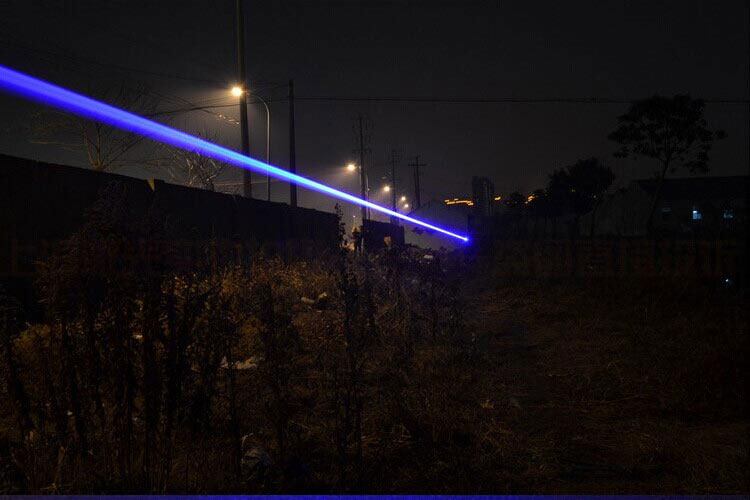In the strongest laser pointer processing environment, the metal melting process has more than 50 different factors play a role, after the National Institute of Standards and Technology – NIST plans to establish a weight production manufacturing test platform for the assessment of process measurement and control technology , Enabling them to observe the melting and solidification processes of metal powders, integrating process metering tools, and developing control algorithms and software for process measurement / testing based on data acquisition.
During the 3000mw green laser processing, the heat transfer process between the particles and the melt interface in the molten bath has an important effect on the motion behavior of the particles, which in turn affects the uniformity of the tissue. In particular, the material system, such as the non-equilibrium melting The pool will accelerate the floating or sinking of the particles; at the same time, the distribution of the enhanced particles also with the melt flow and liquid-solid front are closely linked.
The numerical simulation of the heat transfer and mass transfer between the particles and the melt interface is a complex research involving three-dimensional spatial and multi-physical fields. The previous research focuses on the temperature field and velocity field of the molten pool, including the melting interface of the powder, Interface and gas-liquid interface, but are basically not involved in the interaction between the melt and the enhanced particles, in particular the quantitative analysis of enhanced particles and melt heat transfer process. The metal melt adjacent to the reinforced particles has a large temperature gradient and a more pronounced dynamic viscosity, ie, there is a thermal boundary layer in fluid mechanics.
The enhanced particles in the burning laser pointer, the surface will melt and accompanied by element diffusion, and then the particles / melt interface near the formation of chemical composition gradient. Under the combined action of chemical composition gradient and temperature gradient, the rheological properties of the fluid at the particle / melt interface will be extremely complex and can only be solved by some empirical values and imperfect mathematical models, which can not be quantitatively and dynamically Metallurgical behavior between particles and melt interface.
At the same time, laser processing with high temperature overheating melting powder and accompanied by the rapid cooling of the characteristics of the pool, the experimental observation is unrealistic. However, the distribution of the enhanced particles in the solidification matrix directly affects its service performance. The uniformly distributed reinforcing particles can effectively transmit and carry the load on the substrate and avoid early failure. At present, there is no project available in the laser processing process pool to enhance the particle and melt interface heat transfer mass transfer simulation software.
The mathematical model of the heat transfer and mass transfer between the particles and the melt interface during the green astronomy laser processing was simulated by computer. The simulation results show that the particle size of the particles can be dynamically and quantitatively The temperature field, velocity field and pressure field of the interface between the particle and the melt are studied, and the distribution of the particles in the solidification matrix is predicted. The mapping relationship between the process and interface is established. The development of composite laser processing technology, to improve the distribution of particles in the matrix and get a uniform microstructure to provide theoretical guidance. Therefore, Nanjing University of Aeronautics and Astronautics has solved the problem of quantitative or semi-empirical deterministic model of laser processing, and realized the quantitative study on the heat transfer and mass transfer between the enhanced particle and the melt interface, and accurately predicted the enhancement of the particles in the solidification matrix Of the distribution of the state.
The micro – macro – scale multi – scale coupling simulation was carried out to enhance the heat brightest laser pointer transfer and mass transfer between the particles and the melt interface, and the relationship between the particle and the melt interface was discussed. That is, to enhance the movement of particles under the action of the melt mechanism and the final distribution in the solidified structure.
Based on the combination of numerical simulation, hydrodynamics and thermodynamics, the heat transfer and mass transfer processes between the particles and the melt interface were reconstructed at different scales and positions. The thermodynamic and kinetic mechanisms of the metallurgical metallurgy were quantitatively studied and predicted The results show that the results are in good agreement with the experimental results.
http://www.leapzipblog.com/blog/read/290939/the-importance-of-servo-motor-for-laser-cutting-machine/

